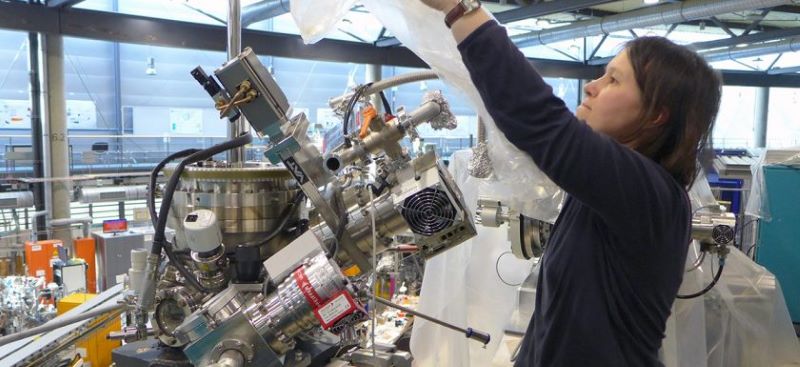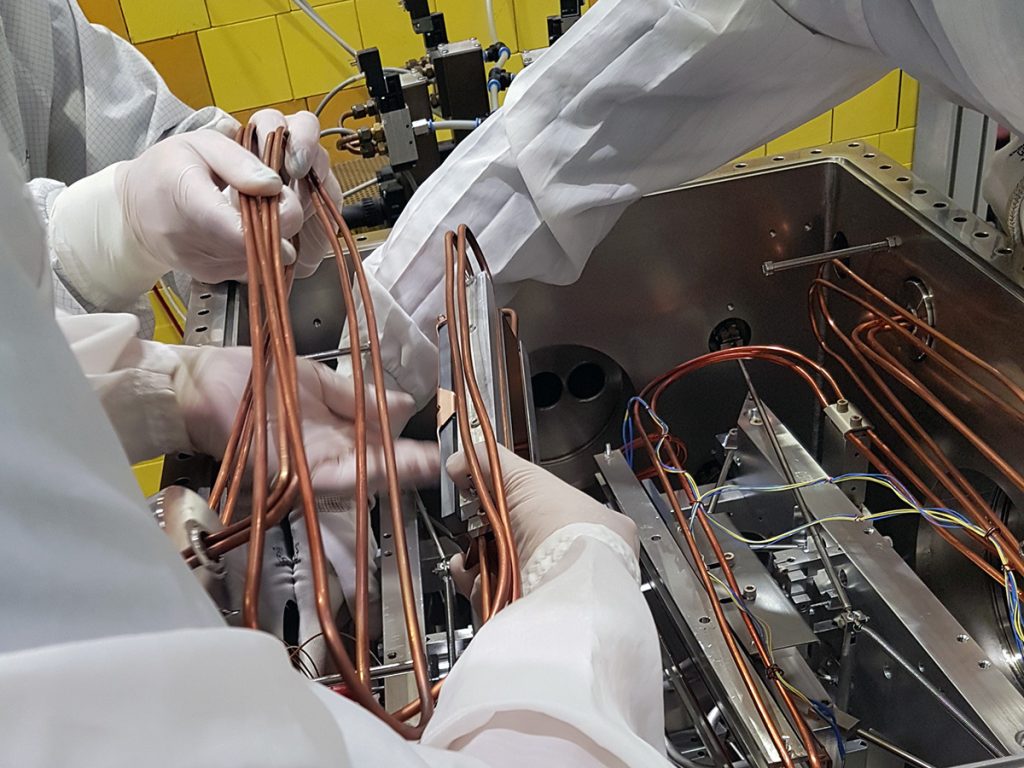
At BESSY II, we are operating some 50 beamlines, each of which offers the latest methods in spectroscopy and microscopy.
Each beamline has a dedicated beamline scientist, who not only manages all the projects on the beamline and knows its every secret, but also works with local and visiting scientists to get the best results out of the beam and its instruments for every specific research question they have. Without the beamline scientists, much of the science at BESSY II could never happen.
But who are they? What makes a good beamline scientist and where do they come from? In this little series you are going to find out. We start with Dr. Annette Pietzsch, who takes care of beamline UE112 PGM-1.
Hi, Dr. Pietzsch, tell us a bit about your beamline.
It’s called UE112 PGM-1 and it’s a low energy beamline, with just up to 300 meV, something we are specialised in here at BESSY II. The beamline optics will be updated to create a microfocus which will be a very good fit for our meV-RIXS spectrometer that is scheduled to go online in early 2020.
What will be good applications for research?
The meV-RIXS will have a very high resolution. We think it will be best for studying periodic systems like high temperature superconductors, especially those that use new materials, and transition metals. It also works well for lanthanoids that are used for doping in energy materials. There is a lot of basic research going on here.
“What really struck me in the beginning was how much of beamline planning, build-up, and operation is not scientific challenges, but supposedly simple technical problems.”
What’s your background, scientifically?
I’m a physicist. I did my PhD in Hamburg, then spent time as a Postdoc in Lund, Sweden. After that I moved to Berlin and started working at HZB some six and a half years ago. I study molecules in solution, mostly in water. There is still so much that we don’t understand about water! I do a lot of work at EDAX@VSR, another station here at BESSY II.
What is your work as a beamline scientists?
I work and coordinate with many people to get this beamline up and running. It’s a big group effort, and it needs to be coordinated quite carefully. I have to make sure that everyone knows what is going on, and that the different steps happen in some sort of proper order. I’m also involved in the procurement of parts, and I write quite a few reports for management to keep them in the loop.
What is your biggest challenge?
What really struck me in the beginning was how much of beamline planning, build-up, and operation is not scientific challenges, but supposedly simple technical problems. One meter wide emergency pathways, for example. They make a lot of sense, of course, but when you see the tight spaces in the synchrotron where we have to install the instruments, this can become a huge headache. But it’s this kind of problem solving that I also find very rewarding. We have a great team here at BESSY II, with a lot of experience. So usually, together, we can figure something out.
What are you working on at the moment?
Right now, we are installing and aligning new mirrors for the beamline. In order to achieve the high resolution and precision we are aiming for, we have to have a very narrow focus for the beam. And this means very, very clean mirrors, in our case four of them. They are coated with a thin film of gold, on a base of mono-crystal silicon. Expensive… And there aren’t that many places to get them. Ours now come from Germany, France, and Japan. My colleague Karl Bauer did all the calculations, and now we have to test the mirrors and begin to put the whole thing together.

When will the beamline be operational?
Most of the work will happen during the summer shutdown this year. Then we will do all the adjustment work, which will take some time. The plan is to have the new beamline available for users in 2020.
(kh)
